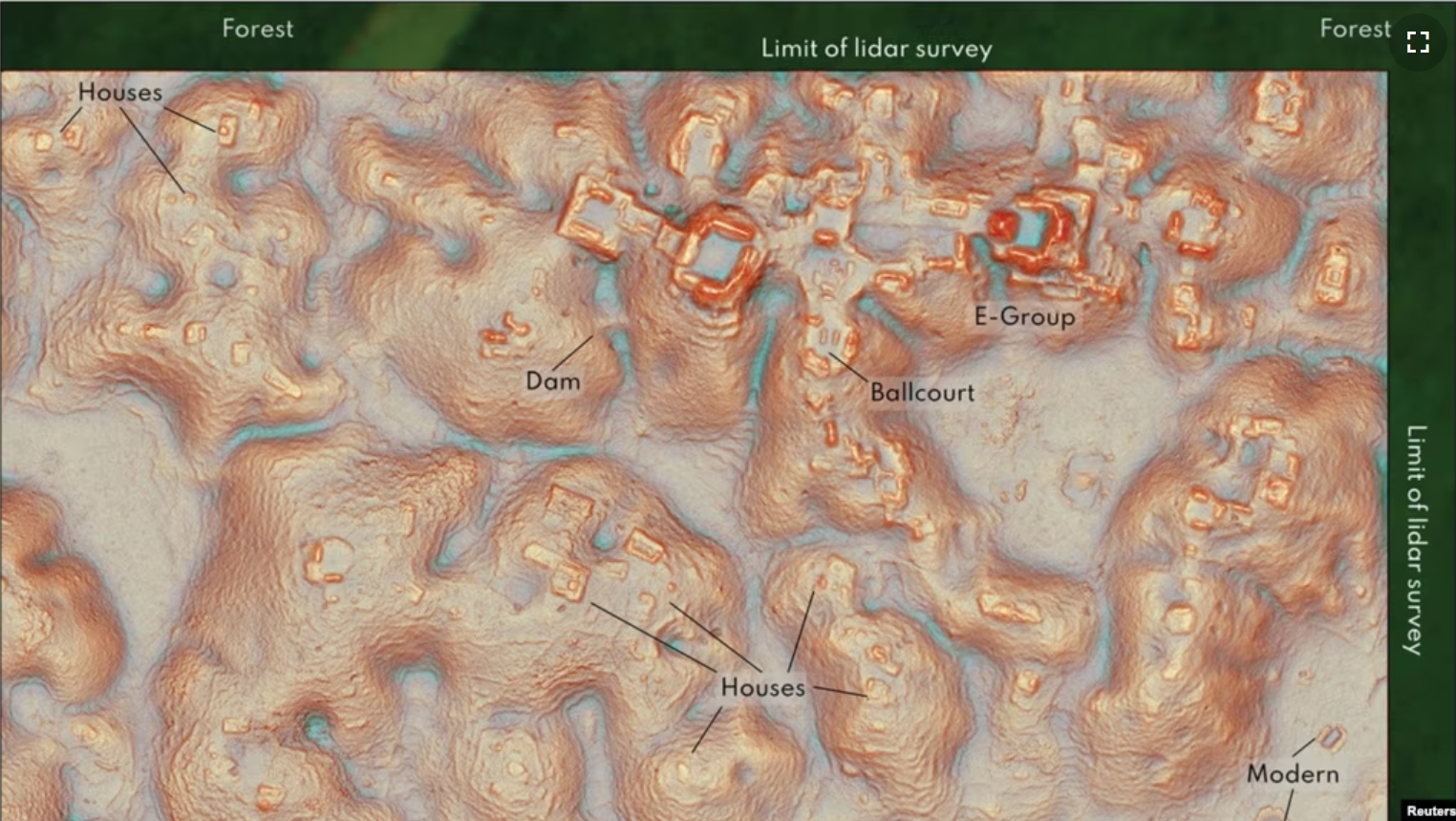Researchers in Mexico have discovered a large, lost Mayan city.
The major urban settlement, named Valeriana, is hidden deep in the southern forest of Campeche.
The discovery adds to existing knowledge about ancient Mayan settlements.
Valeriana was discovered by chance thanks to Lidar, or Light Detection and Ranging. It is a technology that uses lasers to map the Earth’s surface.
The data used for the study came from around 122 square kilometers of high-quality Lidar data collected in 2013.
The work, led by the Nature Conservancy in Mexico, was part of a forest monitoring project called Alianza. The project aimed to reduce emissions from tree cutting, or deforestation, and land damage.
Researchers wrote in the study, published by Cambridge University Press, that “The discovery of Valeriana highlights the fact that there are still major gaps in our knowledge of the existence or absence of large sites within as-yet unmapped areas of the Maya Lowlands.”
Lidar technology revealed a major settlement, filled with buildings and agricultural infrastructure.
The classical-era Maya civilization dates back to around 1800 to 1100 years ago. At the time, the Maya civilization grew its control over present-day southern Mexico and what are now Belize, El Salvador, Guatemala and Honduras.
In the study, the researchers identified a total of 6,764 structures, suggesting a populous ancient city.
The researchers will carry out further detailed study of the dataset – both remotely and in the field. The discovery serves as a way to better understand ancient Mayan urbanization and settlements.
I’m John Russell.
Raul Cortes reported on this story for Reuters. John Russell adapted it for VOA Learning English.
_______________________________________________
Words in This Story
urban – adj. of, relating to, characteristic of, or constituting a city
monitor — v. to watch, keep track of, or check usually for a special purpose
highlight – v. to constitute a significant or especially interesting part of; to center attention on
infrastructure – n. the resources (such as buildings, roads, irrigation, or equipment) required for an activity
